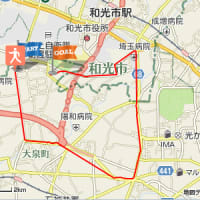Siyuan Liang, Vladimir Ristich, Hisashi Arase, Jean Dausset, Edgardo D. Carosella, Anatolij Horuzsko.
PNAS 105, 8357-8362 (2008) | doi:10.1073/pnas.0803341105
The expression of Ig-like transcript (ILT) inhibitory receptors is a characteristic of tolerogenic dendritic cells (DCs). However, the mechanisms of modulation of DCs via ILT receptors remain poorly defined. HLA-G is a preferential ligand for several ILTs. Recently, we demonstrated that triggering of ILT4 by HLA-G1 inhibits maturation of human monocyte-derived conventional DCs and murine DCs from ILT4 transgenic mice, resulting in diminished expression of MHC class II molecules, CD80 and CD86 costimulatory molecules, and prolongation of skin allograft survival. Different isoforms of HLA-G have diverse effects on the efficiency to induce ILT-mediated signaling. In this work, we show that HLA-G1 tetrameric complex and HLA-G5 dimer, but not HLA-G5 monomer, induce strong ILT-mediated signaling. We determined that the arrest of maturation of ILT4-positive DCs by HLA-G ligands involves the IL-6 signaling pathway and STAT3 activation. Ligation of ILT4 with HLA-G on DCs results in recruitment of SHP-1 and SHP-2 protein tyrosine phosphatases. We propose a model where SHP-2 and the IL-6–STAT3 signaling pathway play critical roles in the modulation of DC differentiation by ILT4 and HLA-G.# HLA-G1は四量体、HLA-G5は二量体でILT媒介シグナリングを強く誘導するそうな

Hans P. Koch, Tatsuki Kurokawa, Yoshifumi Okochi, Mari Sasaki, Yasushi Okamura, H. Peter Larsson.
Proc. Natl. Acad. Sci. USA, Early Edition | doi:10.1073/pnas.0801553105
Voltage-gated potassium channels are comprised of four subunits, and each subunit has a pore domain and a voltage-sensing domain (VSD). The four pore domains assemble to form one single central pore, and the four individual VSDs control the gate of the pore. Recently, a family of voltage-gated proton channels, such as HV or voltage sensor only protein (VSOP), was discovered that contain a single VSD but no pore domain. It has been assumed that VSOP channels are monomeric and contain a single VSD that functions as both the VSD and the pore domain. It remains unclear, however, how a protein that contains only a VSD and no pore domain can conduct ions. Using fluorescence measurements and immunoprecipitation techniques, we show here that VSOP channels are expressed as multimeric channels. Further, FRET experiments on constructs with covalently linked subunits show that VSOP channels are dimers. Truncation of the cytoplasmic regions of VSOP reduced the dimerization, suggesting that the dimerization is caused mainly by cytoplasmic protein–protein interactions. However, these N terminus- and C terminus-deleted channels displayed large proton currents. Therefore, we conclude that even though VSOP channels are expressed mainly as dimers in the cell membrane, single VSOP subunits could function independently as proton channels.# 一瞬、YOさんと見間違えた…

# 「VSOP」=「voltage sensor only protein」って、絶対狙ってるよね

Jeffrey C. Andrews-Hanna, Maria T. Zuber, W. Bruce Banerdt.
Nature 453, 1212-1215 (2008) | doi:10.1038/nature07011
The most prominent feature on the surface of Mars is the near-hemispheric dichotomy between the southern highlands and northern lowlands. The root of this dichotomy is a change in crustal thickness along an apparently irregular boundary, which can be traced around the planet, except where it is presumably buried beneath the Tharsis volcanic rise. The isostatic compensation of these distinct provinces and the ancient population of impact craters buried beneath the young lowlands surface suggest that the dichotomy is one of the most ancient features on the planet. However, the origin of this dichotomy has remained uncertain, with little evidence to distinguish between the suggested causes: a giant impact or mantle convection/overturn. Here we use the gravity and topography of Mars to constrain the location of the dichotomy boundary beneath Tharsis, taking advantage of the different modes of compensation for Tharsis and the dichotomy to separate their effects. We find that the dichotomy boundary along its entire path around the planet is accurately fitted by an ellipse measuring approximately 10,600 by 8,500 km, centred at 67° N, 208° E. We suggest that the elliptical nature of the crustal dichotomy is most simply explained by a giant impact, representing the largest such structure thus far identified in the Solar System.
Margarita M. Marinova, Oded Aharonson, Erik Asphaug.
Nature 453, 1216-1219 (2008) | doi:10.1038/nature07070
The Mars hemispheric dichotomy is expressed as a dramatic difference in elevation, crustal thickness and crater density between the southern highlands and northern lowlands (which cover ∼42% of the surface). Despite the prominence of the dichotomy, its origin has remained enigmatic and models for its formation largely untested. Endogenic degree-1 convection models with north–south asymmetry are incomplete in that they are restricted to simulating only mantle dynamics and they neglect crustal evolution, whereas exogenic multiple impact events are statistically unlikely to concentrate in one hemisphere. A single mega-impact of the requisite size has not previously been modelled. However, it has been hypothesized that such an event could obliterate the evidence of its occurrence by completely covering the surface with melt or catastrophically disrupting the planet. Here we present a set of single-impact initial conditions by which a large impactor can produce features consistent with the observed dichotomy's crustal structure and persistence. Using three-dimensional hydrodynamic simulations, large variations are predicted in post-impact states depending on impact energy, velocity and, importantly, impact angle, with trends more pronounced or unseen in commonly studied smaller impacts. For impact energies of ∼(3–6) × 1029 J, at low impact velocities (6–10 km s-1) and oblique impact angles (30–60°), the resulting crustal removal boundary is similar in size and ellipticity to the observed characteristics of the lowlands basin. Under these conditions, the melt distribution is largely contained within the area of impact and thus does not erase the evidence of the impact's occurrence. The antiquity of the dichotomy is consistent with the contemporaneous presence of impactors of diameter 1,600–2,700 km in Mars-crossing orbits, and the impact angle is consistent with the expected distribution.
F. Nimmo, S. D. Hart, D. G. Korycansky, C. B. Agnor.
Nature 453, 1220-1223 (2008) | doi:10.1038/nature07025
The observation that one hemisphere of Mars is lower and has a thinner crust than the other (the 'martian hemispheric dichotomy') has been a puzzle for 30 years. The dichotomy may have arisen as a result of internal mechanisms such as convection. Alternatively, it may have been caused by one or several giant impacts, but quantitative tests of the impact hypothesis have not been published. Here we use a high-resolution, two-dimensional, axially symmetric hydrocode to model vertical impacts over a range of parameters appropriate to early Mars. We propose that the impact model, in addition to excavating a crustal cavity of the correct size, explains two other observations. First, crustal disruption at the impact antipode is probably responsible for the observed antipodal decline in magnetic field strength. Second, the impact-generated melt forming the northern lowlands crust is predicted to derive from a deep, depleted mantle source. This prediction is consistent with characteristics of martian shergottite meteorites and suggests a dichotomy formation time ∼100 Myr after martian accretion, comparable to that of the Moon-forming impact on Earth.# 何と巨大な衝突…




















